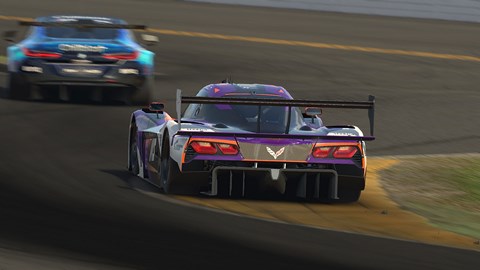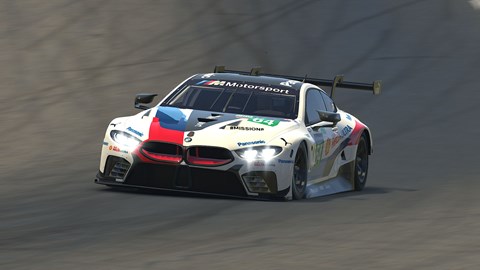► iRacing review on PC
► The most realistic sim?
► Is it worth the money?
If you’ve been following Esports at all, you’ll have heard about iRacing. It’s the sim of choice for several high-profile virtual motorsport competitions, and is tipped by actual racers as being the closest thing to being on track. So what is iRacing, how much does it cost and why do drivers such as Lando Norris and Max Verstappen prefer it to virtually anything else?
Some context
iRacing might be very popular now, but it was released in 2008, and has been in constant development ever since. Originally it used code and physics models from a 2003 NASCAR sim, but in in the following years the software has changed beyond all recognition. In 2020, iRacing is a tool dedicated to getting as close to real driving as possible – from the chassis physics and tyre models, to weekend racing formats.

Best racing games
There’s loads to cover, and the nature of iRacing means players will need to devote a serious amount of time – and money – into it. For that reason, this review will be updated in instalments, and then spun into a standalone review.
What you need
Like any piece of software, you need to check your computer can run iRacing – and thankfully our ASUS rig is more than up to the task. And yes, it’s on PC only. Your performance will vary on the amount of in-game detail you want, and the more visual effects you pile on, the lower the frame-rate. We go for a compromise towards the prettier side, we’re getting well over 60FPS on our 4K-rig anyway.
Best racing wheels
It’s worth making sure our racing wheel is compatible with the game, and again our Fanatec Podium direct-drive unit passes the test. Unlike some racing games, a wheel isn’t really optional for iRacing; either invest in a wheel or pick up a more user-friendly game like Forza Horizon, GT Sport or NFS. You’ll be wasting your money otherwise.

How much does it cost?
In addition to the right equipment, iRacing requires a subscription with different offers giving you better value depending on how much you pay up front. It’s a bit like a gym, and a pricey one, too. The fee is anything from $99.59 for two years to $6.50 a month, and that gets you 13 cars and 19 tracks along with access to the game, as well as monthly patches and updates.
You’ll probably want to splurge on some more familiar tracks and cars, though, with each car costing $11.95 and each track around between $11.95 and $15. Discounts are available, but it’s easy to rack up a decent bill before you’ve even hit the track.
You don’t have to download any extra content to play, but there’s an extensive selection of tracks you won’t really find anywhere else, and some incredible machinery such as the Audi 90, 911 RSR and a few older F1 cars. There are also lots of Nascars and dirt cars, if that’s more your thing.
So it’s true, iRacing is expensive, but it very much depends on how much kit you already have. Keen sim-racers will likely already have a wheel, chair and probably a high-powered PC and TV – so the main outlay is the iRacing software itself.
Back to iRacing
After purchasing and selecting a track and car combo I’m familiar with – Spa and a 911 RSR – and iRacing is more like a gym than I first thought: it’s a monthly outgoing that is likey to reduce your self-esteem – at least initially.
Stringing a decent, clean lap together is a struggle, and after dialling things down further and further, my pace wouldn’t trouble a safety car. It’s tough to get to grips with the ABS – which seems non-esistent – and the steering feels a little alien compared to other sims.

There’s plenty of feedback from the wheel, and the handling feels consistent, but hours of more forgiving games like GT Sport mean I’m not quite understanding the information I’m getting. Still, it’s a joy to drive the RSR, which iRacing has captures in all its tinnitus-inducing glory. This is by far the most realistic RSR I’ve heard in a game, and in replays changing down sounds exactly as the real car did. Interestingly, iRacing forces you to cockpit mode, and it sounds just like the real onboards you’ve seen.
When I decide to push on, things get hairy again. As I emerge from Pouhon, I decide to pin the throttle where I generally would in most racing games. I’m greeted with a little oversteer, a little more, and then just a dollop more, as the rear slowly decides to overtake the front. The first time this happens, I have a slow-mo high-speed spin, but the second time, small corrections keep the car on the right track.
It’s a lesson in the subtlety needed with iRacing, but also the reassuringly predictable – once you understand it – handling model. I end up in the wall two corners later, but I’ve had a glimpse of what iRacing’s all about; the challenge of taming these accurately modelled cars, and just how thrilling it can be when you get it right.
I’ll update this article when I’ve played more.